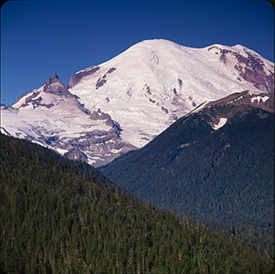
Hyperstereo View of Mount Rainier

Hyperstereo View of Mount Rainier
One of the better captures from the Seattle Lake Union fireworks display this year. The pano mount helps to concentrate on the most pleasing part of the image. Approximately 40 foot stereo base.

Independence Day fireworks over Seattle’s Lake union, July 2023
Ages ago, I shot this view of the (then) new UVA Hospital with a Hasselblad, maybe two of them on a bar – in any case this is a cha-cha to obtain the necessary stereobase, which was probably around a foot, judging from the parallax in the image. I imagine the exposure was around 30 seconds. Extra credit for the astronomers in the group that can identify the stars in the sky:
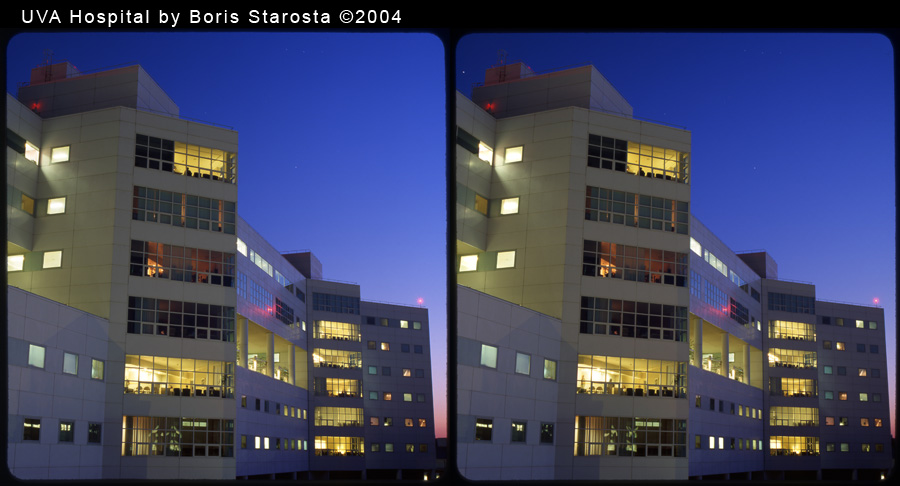
UVA Hospital, Charlottesville, VA
My “day job” is technical illustration. My clients are engineers at the University of Virginia, mostly. One day I went to visit a lab, and discovered this gigantic machine. Impossibly complex in its construction, for all I knew it could have been a time machine. So I started calling it the “time machine,” whenever I mentioned to my engineer client, and that I’d like to come in some day to photograph it. The title of the image that I finally made says about the same thing. For real, this is a Directed Vapor Deposition machine. A big electron gun hits one material, vaporizes it, and the vapors are deposited onto another material. Believe it or not, it is not a custom made machine. You buy these things retail. Cost? about $1M:
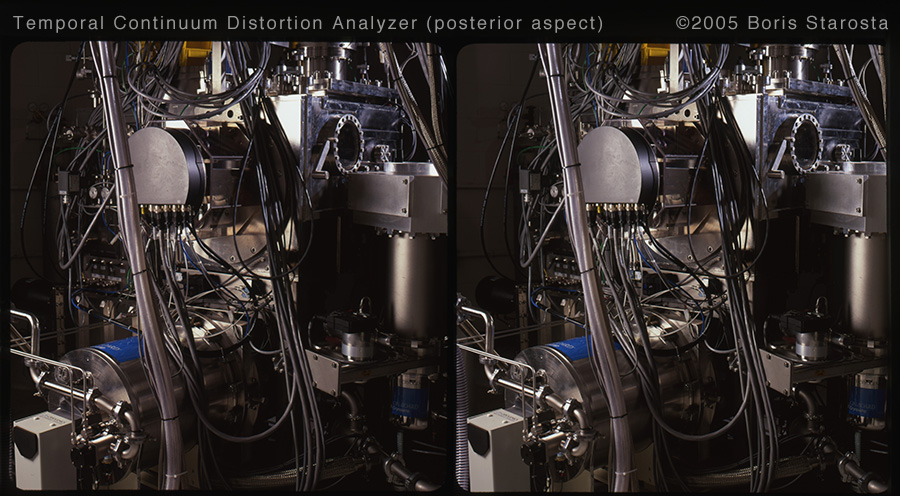
Temporal Continuum Distortion Analyzer (Posterior Aspect)
In or around 2012, I had the opportunity to photograph inside a retired coal-fired power plant not far from where I live. This plant, in Bremo Bluff, VA, was the first “automatic” coal fired power plant built in USA. “Automatic” meant in those days that most of the valves, flaps, conveyor belts, and other machinery was centrally controlled. Which means, there was a central control room, where through the use of electrical switches, one could remotely actuate any of the hundreds of valves in the plant – as these were electrically actuated. I’m sure there was a measure of fear or distrust in the system early on, as plant operators were instead used to shouting control commands at a team of plant workers, on whom one could surely better rely to get the job done than the new-fangled electric motors.
I worked on three separate days in the plant to make photographs, using with great pleasure John Thurston’s custom TL-120-55 for the wide angle views. I am forever indebted to John for his generous loan of the camera to me that year. In this view we have my old friend Chuck Holzner up there on another level (see the white hard-hat?) taking some of his own pictures. Along the left side of the view, rising up through the various levels, is one of the four burners in the plant. These are 100 foot tall furnaces (not counting the smokestack outside the building!), that included Ash removal apparatus at the very bottom, a furnace chamber 1/3 of the way up including hundreds of pipes for heat exchange (i.e. for boiling water, making steam), and at the top a variety of filters to capture particulates in the exhaust. I’ll guess this was a three seconds exposure:
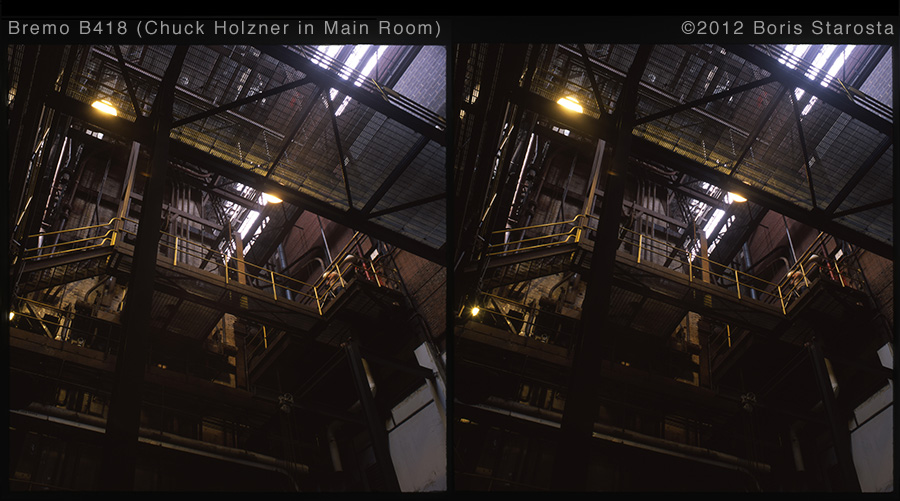
Bremo B 418 Main Room
Elsewhere in the plant, I captured this view of just a tiny fraction of the pipes and plumbing that, along with grated floors and vast spaces, characterized the place. Probably a thirty seconds exposure in this dark spot:
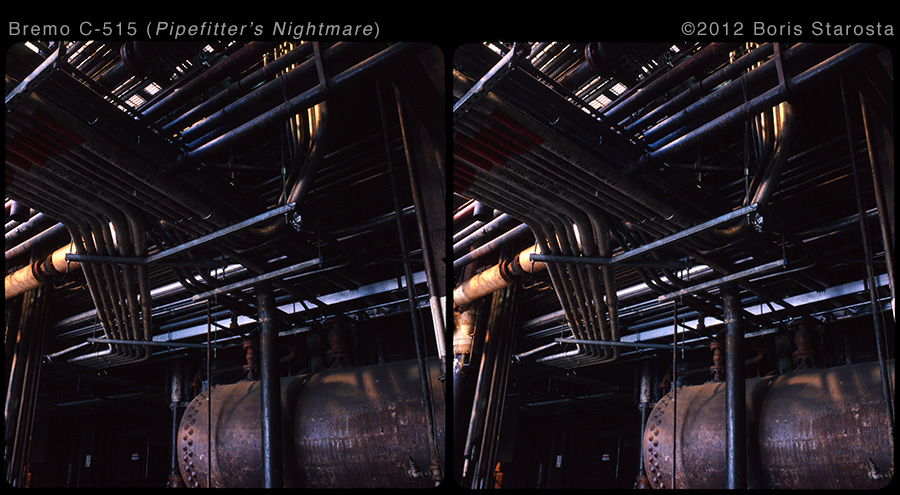
Bremo C 515 “Pipefitter’s Nightmare”
I’ll close with an image obtained in or around 2014 at the United States Botanical Garden in Washington, DC, where I fell in love with the “Jungle” greenhouse that is central to the place. In this three-stories tall greenhouse, one can commune with a variety of lush tropical plants, even in the deep of winter, and witness the slow motion battle between the built environment and the imprisoned flora. This picture was taken with a Sputnik, a good bit after sunset – I like the interplay of just a little natural light in the background, with artificial lights in the foreground. I imagine about a ten or twenty second exposure.
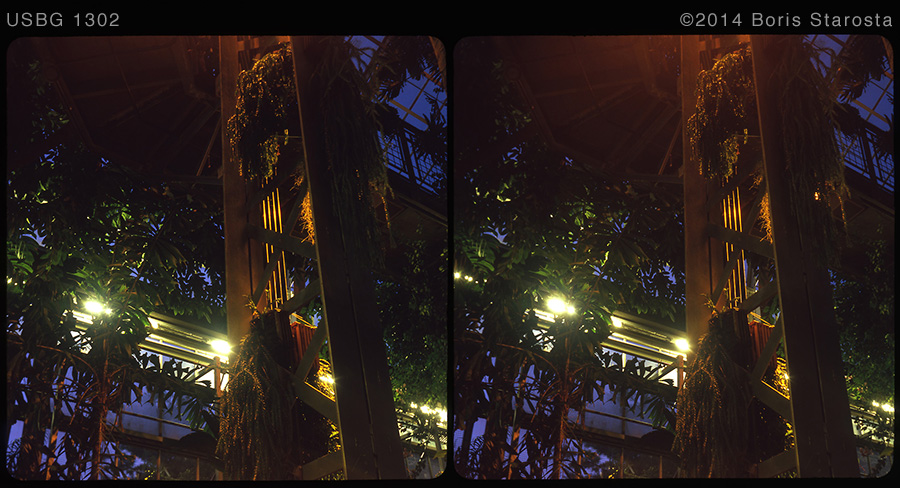
USBG-1302
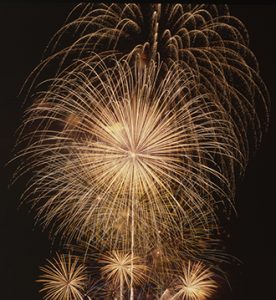
Takin’ It To ‘Z!’
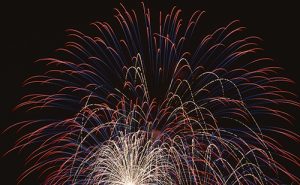
Independence Day fireworks over Seattle’s Lake Union
Taken with twin Hasselblad 500Cs spaced 40 feet apart and triggered with an ingenious device created by my good friend James Baker. The photo is taken from James’ roof. There will be no public fireworks show in Seattle in the year of 2020. But next time I shoot them I expect to be able to trigger the cameras wirelessly, using motorized film winders. Looking forward to that!
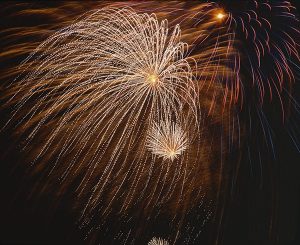
Independence Day fireworks over Lake Union in Seattle
The cameras are aimed into the sky during the day. This usually works out well, but last year I got burned. The cameras were aimed normally high but the fireworks were set off abnormally low. So I got almost nothing. This year I’m planning to shoot with a wider lens to capture more of the entire scene, and I’m in the process of running tests on those lenses to see if they match.
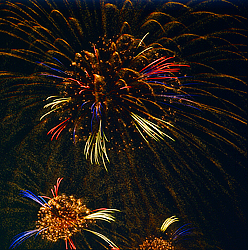
Independence Day fireworks above Seattle’s Lake Union, July 2017
This year (2018) I aimed my cameras high based on the height of the fireworks from last year. That turned out to be sub-optimal, as they put on a “low show,” and I didn’t get nearly as many shots as I might have. I’m thinking next year I may try to go wide and capture the whole scene, with the barge and city background.
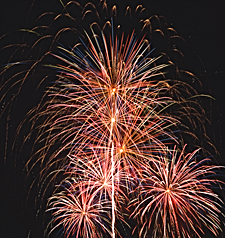 One of my favorite fireworks shots, especially for the fineness of the light trails, and the color. I shared this image with someone who told me it made her feel like she was on top of the magic castle at Disneyland — one of my all-time favorite responses to a 3D slide.
One of my favorite fireworks shots, especially for the fineness of the light trails, and the color. I shared this image with someone who told me it made her feel like she was on top of the magic castle at Disneyland — one of my all-time favorite responses to a 3D slide.
Shot with twin Hasselblad 500Cs sporting 150mm lenses. Approximately 40 foot separation (based on the half mile distance between me and the fireworks, and the fact that we don’t discern any details behind the firworks — otherwise the 40 foot separation would be a problem).
Some of you may get a feeling of deja vu with this one. It is almost identical to a shot I took with my TL-120 a few years back. This time I returned with my Lubitel rig to get a hyper shot of the wonderful and famous Charles Bridge in Prague, which I was just itching to do. The TL-120 image did not show enough depth for me. This one does. I was thinking about putting both images in the folio for comparison, but I would rather show some variety. I prefer this image to the original.
Provia 100f, but I have no idea what the aperture was, but the shutter speed was 1/125th. I never change that, lest I lose my matching shutter speeds.
This image was taken with twin Lubitels again. This time I did not have my tripod or my mounting bar, and I am pretty sure if I did, I would have drawn a little too much attention in the airport terminal. Instead, I recruited my son Preston to look after one camera. We used a window ledge to rest the cameras on about a meter and a half separation and aimed them at a chosen target. Then we did a count down to fire the shutters, with our fingers on the lense’s shutter release. (I didn’t even have cable releases with me. just the cameras, to protect the film inside from the harsh baggage X-ray). We figured the shot was spoiled because both of us managed to turn the camera 45 degrees on the slippery aluminum window frame when we tripped the shutters. To our surprise, they both came out perfect. the shutters must have closed before the cameras slipped. On top of that, the cameras were aimed so well that I could align the chips in my largest mounts.
The plane in the foreground is Poland’s “Air Force one”. We had just watched the plane arrive to a crowd of reporters and photographers gathered on the tarmac to greet the Polish President or Prime Minister or some such, coming to town for some summit talks. They had all cleared out before we could get the cameras set up.
Here is a quiz question. How many aircraft can you see in the image?
We were on our way to a different beautiful historic town when we chanced upon this wonderful view. We stopped by the river bank and I set up my Lubitel rig and shot this hyper (about 16″ separation) using my trusty one-cable-release-in-each-hand synchronization method. As usual, it stopped a bird in flight. Provia 100f and almost certainly sunny 16 on this one.